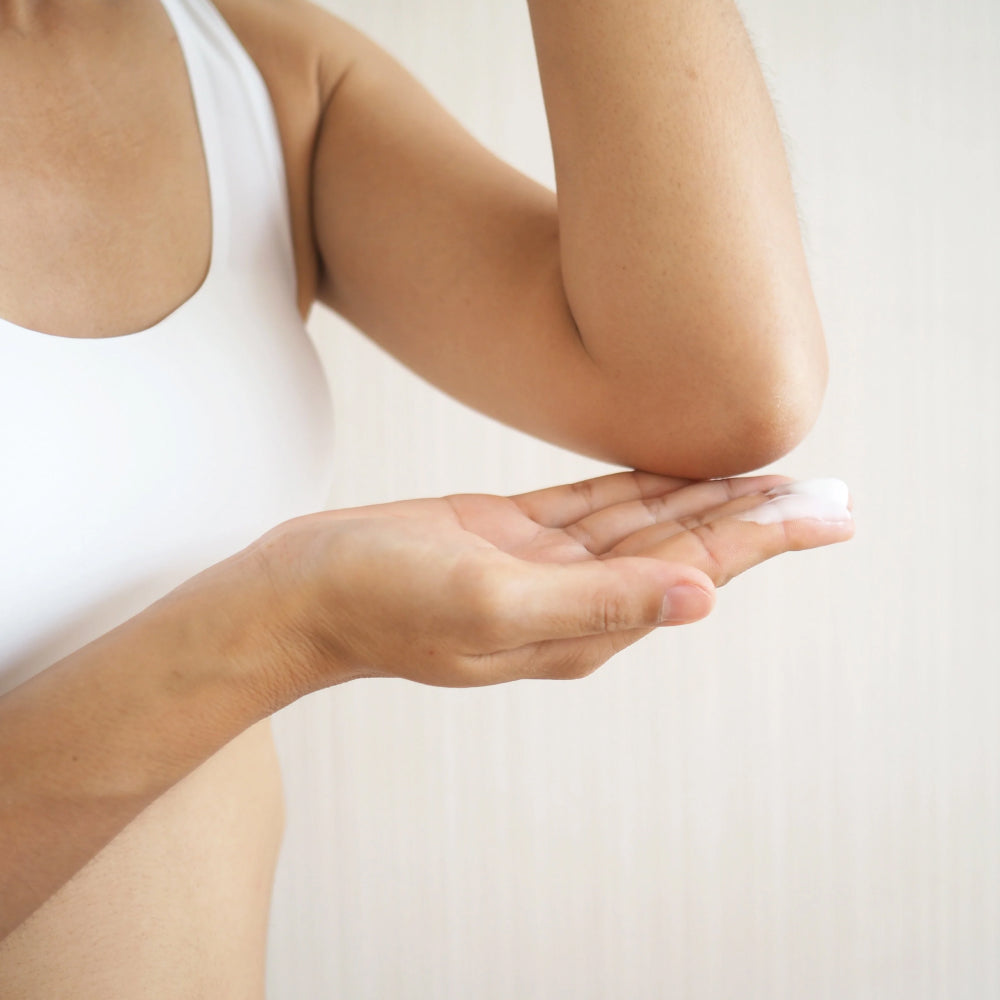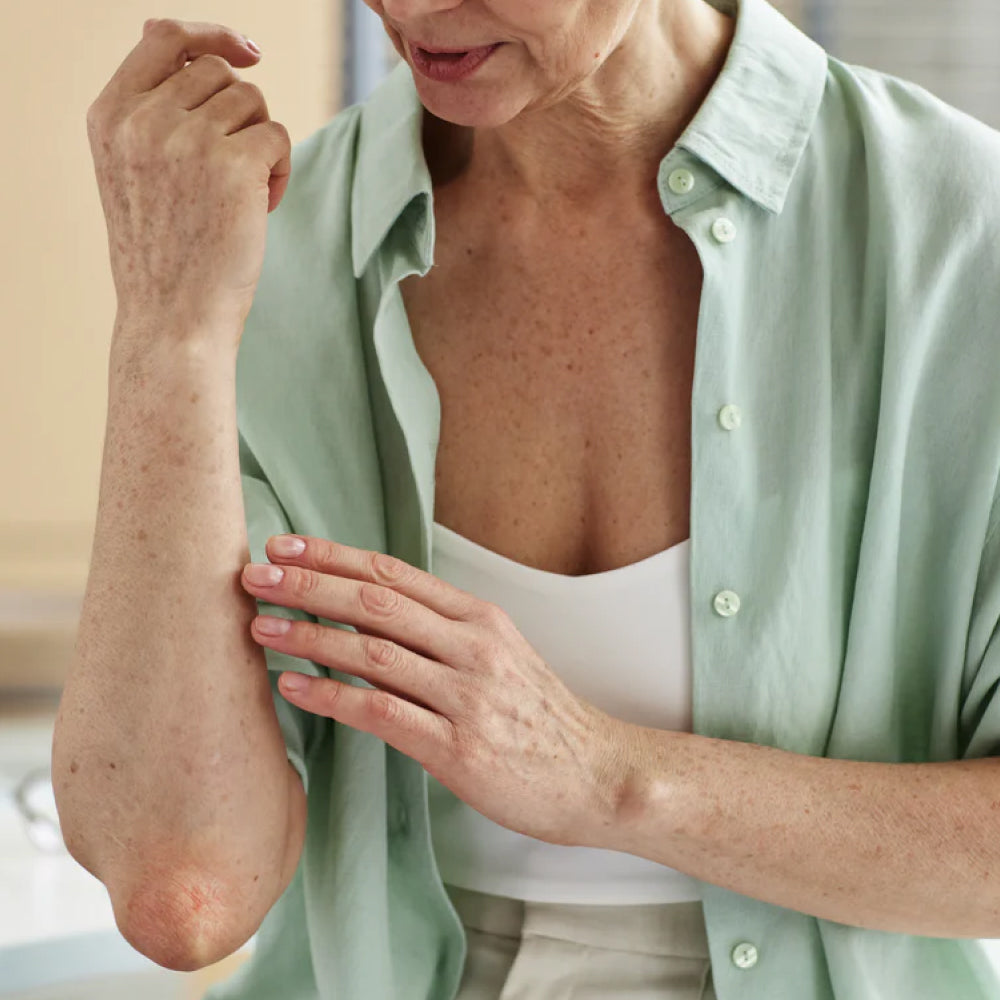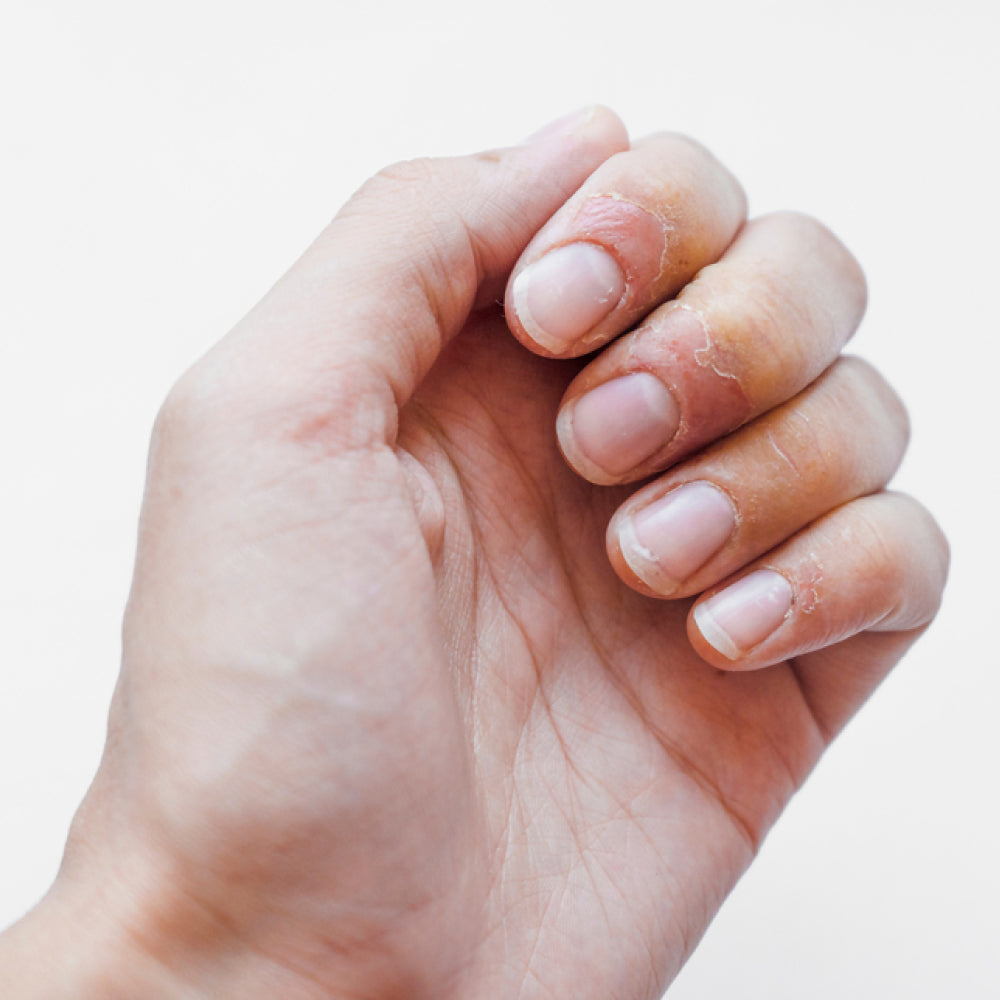Pediatric dermatology recognizes nail eczema vs psoriasis as distinct conditions that severely impact nail function. Previous eczema anywhere on the body increases the risk of developing nail eczema. In contrast, older adults typically develop nail psoriasis, which emerges as an autoimmune-based skin condition.
These two conditions lack definable cues but professional dermatologists offer various treatments to enhance nail health. Combined medical treatment with lifestyle should further improve conditions.
What is Nail Eczema?
Fingernail alterations are observed with greater frequency than toenail changes (Quaade et al., 2021, Prevalence, incidence, and severity of hand eczema in the general population – A systematic review and meta‐analysis). When appearing on hands and feet, the condition is termed pompholyx eczema. Pompholyx eczema can result in inflammation of the nail folds and the adjacent skin to the nails. This leads to the small indentation formation, known as pitting, resembling closely ice-pick punching feelings. It’s important to promptly address this condition to avoid any exacerbation.
Recent findings indicate nail eczema is one of the most common dermatological disorders that develops in about 5.5% of American adults. Patients usually experience itchy, skin inflamed parts scattered over various body sections (Quaade et al., 2021, Prevalence, incidence, and severity of hand eczema in the general population – A systematic review and meta‐analysis).
What is Nail Psoriasis?
According to the Cleveland Clinic, nail psoriasis is an autoimmune disorder in which the immune system turns against the body’s cells instead of protecting them, leading to increased skin cell generation rates. People with nail psoriasis typically also develop psoriatic eruptions on other areas of their skin.
While nail psoriasis may affect anybody, some circumstances increase the risk of acquiring the illness, including:
-
People over 40
-
People having a family history of psoriasis
-
People diagnosed with psoriatic arthritis
Nail psoriasis is a common disorder, affecting more than half of all psoriasis patients and nearly 86% of those with psoriatic arthritis (Cleveland Clinic, 2022, Nail psoriasis: What it is, causes, nail pitting, treatment).
Nail Eczema vs. Psoriasis
Although they have certain similarities, there are distinctions between nail eczema vs psoriasis. Both conditions can cause nail pitting in individuals who have psoriasis or eczema elsewhere on their body. However, nail psoriasis is also linked to symptoms like nail lifting and white discoloration, particularly in older adults. Nail eczema, on the other hand, can also cause grooved, thin, and brittle nails and may occur at any age
Causes
The primary cause of nail psoriasis is the immune system. Skin proliferation is accelerated in those who have this disorder, resulting in frequent cell regeneration and the emergence of a rash every few days. Thus, psoriasis can affect the nails in addition to the skin (Cleveland Clinic, 2022, Nail psoriasis: What it is, causes, nail pitting, treatment).
Symptoms
The symptoms of nail eczema vs psoriasis differ significantly, thus it is important to recognize their unique characteristics.
Verywell Health (2024) indicates the symptoms of nail eczema include:
-
Longstanding eczema in other body regions
-
Rash on the hands or feet
-
Ridged nails as lines across their length or width
-
Nail pitting, which leads to small dents in the nails
-
Wavy or soft nails
-
Nail shedding
In severe cases, nail eczema can cause deformities requiring medical intervention (Charleson, K. (2024). What’s the difference between nail eczema and nail psoriasis? Verywell Health)
Symptoms of nail psoriasis may include:
-
Color changes in the nail bed may appear in yellow, red, pink, or brown patches.
-
Pitting, with dents varying in size and depth
-
Structural changes such as grooves (Beau’s lines) across the nails
-
Thinning nails that may crumble
-
Nail separation from the nail bed (known as onycholysis) can potentially lead to fungal infections (Cleveland Clinic, 2022, Nail psoriasis: What it is, causes, nail pitting, treatment).
Diagnosis and Tests
A healthcare expert can diagnose psoriasis or nail eczema by doing a complete physical examination, allergy testing, and nail clipping tests while ruling out fungal diseases. When dealing with nail psoriasis, medical practitioners can use the Nail Psoriasis Severity Index (NAPSI) to determine the severity of the problem. This index divides the nail into regions and assigns a score based on the symptoms identified.
Treatment
Management strategies vary for nail eczema and nail psoriasis.
According to Verywell Health (2024), nail eczema can be managed through proper personal hygiene.
-
Avoid irritating products
-
Wash hands with mild, fragrance-free soaps
-
Dry hands well after washing
-
Wear gloves while washing dishes
-
Protect hands with fragrance-free moisturizers after drying them
With appropriate treatment, nail eczema may improve within a few weeks.
Whereas the Cleveland Clinic (2022) highlights that nail care for psoriasis can consist of both prescription and home remedies to manage symptoms:
-
Wash hands and nails regularly
-
Moisturize nails and skin around nails
-
Trim nails short
-
Avoid biting or picking at nails
-
Avoid artificial nails
-
Wear gloves when doing manual work
-
Avoid manicures of the base of the nail
-
Use ointments, or nail polish to conceal nail pitting and improve appearance while advising against acetone-based removers to prevent further damage
-
Consider injections of medication into the skin around the nails for severe cases
-
Take oral medications if prescribed
-
Explore phototherapy or laser therapy as treatment options.
To mitigate the symptoms, it's crucial to maintain nail care, including hydrating the area surrounding the nails and often washing your hands.
When to Consult a Doctor
If you notice changes in your skin or nails, encounter new symptoms, or therapy does not alleviate your existing ones, consult a dermatologist for an accurate diagnosis.
Get medical attention if you also see any redness or swelling in the skin around your nails, as these are signs of an infection.
Phoilex’s products address skin dryness, inflammation, and irritation. Formulated with our unique Phyto-Active Blend™, our over-the-counter products are free of steroids and are created using botanically-derived ingredients rich in antioxidants, vitamins, and amino acids. Instead of only treating the symptoms of skin issues, these products aim to address the root reasons.
-
Active ReLeaf Spot Gel: This gel reduces redness and soothes irritated skin, providing immediate comfort. It effectively addresses wounds and redness while promoting overall skin health.
-
Liverty Dynamic Drops: These drops target internal inflammation—a major trigger for psoriasis and eczema—to support healthier skin from within. They contain essential herbs and vitamins that protect against oxidative stress.
-
Dynamic ReLeaf Duo: This duo combines Active ReLeaf Spot Gel and Liverty Dynamic Drops to soothe itching and inflammation associated with both eczema and psoriasis, offering comprehensive care for affected individuals.
Find Relief from Nail Eczema and Psoriasis with Phoilex
Although nail psoriasis and eczema can significantly impact your life, knowing the differences between nail eczema vs psoriasis, recognizing symptoms, and applying effective management techniques can alleviate symptoms. Incorporating Phoilex into your skincare remedy will provide quick and efficient solutions to soothe your nails and promote healthier skin. Explore Phoilex options for long-lasting relaxation and relief.
FAQs:
Q: How can I tell the difference between nail eczema and nail psoriasis?
A: Nail eczema typically presents with inflammation of the nail folds and small indentations (pitting), often accompanied by itchy skin around the nails. Nail psoriasis, on the other hand, is an autoimmune condition that causes increased skin cell generation and usually appears alongside psoriatic eruptions on other areas of the skin, with more severe nail changes like thickening and separation.
Q: What age groups are most commonly affected by nail eczema versus nail psoriasis?
A: Nail eczema can affect people of any age, but having previous eczema anywhere on the body increases the risk of developing nail eczema. Nail psoriasis typically develops in people over 40 years old, especially those with a family history of psoriasis or diagnosed psoriatic arthritis.
Q: Is nail eczema more common in fingernails or toenails?
A: Fingernail alterations are observed with greater frequency than toenail changes in cases of nail eczema. When the condition appears on both hands and feet, it's specifically termed pompholyx eczema, which can cause inflammation of the nail folds and adjacent skin.
Q: What percentage of people are affected by nail psoriasis?
A: Nail psoriasis affects more than 50% of all psoriasis patients and approximately 86% of those with psoriatic arthritis. The condition is particularly common in individuals over 40 years old and those with a family history of psoriasis.
Q: How common is nail eczema in the United States?
A: Nail eczema is one of the most common dermatological disorders, affecting approximately 5.5% of American adults. The condition typically manifests as itchy, inflamed skin scattered over various body sections, including the nail area.
Q: What are the risk factors for developing nail psoriasis?
A: The main risk factors for nail psoriasis include being over 40 years old, having a family history of psoriasis, and being diagnosed with psoriatic arthritis. The condition is autoimmune in nature, where the immune system attacks the body's own cells instead of protecting them.
References:
-
Charleson, K. (2024, April 3). What’s the difference between nail eczema and nail psoriasis? Verywell Health. https://www.verywellhealth.com/nail-eczema-vs-nail-psoriasis-5194006
-
Cleveland Clinic. (2022, April 25). Nail psoriasis: What it is, causes, nail pitting, treatment. Cleveland Clinic. https://my.clevelandclinic.org/health/diseases/22841-nail-psoriasis
-
Quaade, A. S., Simonsen, A. B., Halling, A., Thyssen, J. P., & Johansen, J. D. (2021). Prevalence, incidence, and severity of hand eczema in the general population – A systematic review and meta‐analysis. Contact Dermatitis. https://onlinelibrary.wiley.com/doi/10.1111/cod.13804
Read more

The skin throughout your elbow area may feel itchy and look red and dry. This might make you try numerous creams to relieve the discomfort. Your symptoms may point toward either eczema or psoriasis...

Although eczema is often considered a childhood skin condition, it affects over 31.6 million Americans (National Eczema Association, 2017, What is eczema?). This highlights its prevalence across al...
